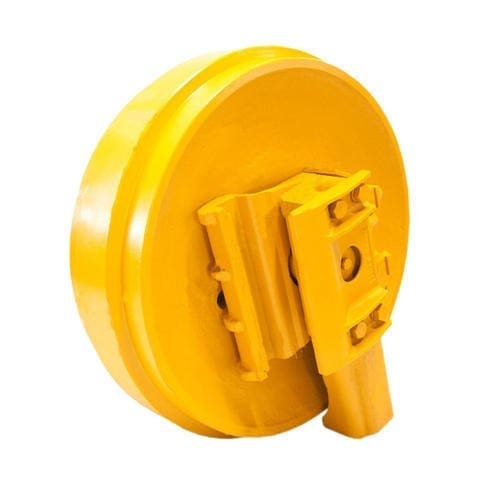Idler

Description
Idlers are key components used in conveyor systems and various types of machinery to support and guide the movement of belts or chains. They are typically cylindrical or roller-shaped parts that rotate freely to reduce friction and ensure smooth, efficient operation of the conveyor or drive system. Idlers are strategically placed along the length of a conveyor belt to maintain proper tension, alignment, and tracking, preventing misalignment and minimizing wear on the belt. Made from durable materials such as steel, aluminum, or plastic, idlers are designed to withstand the stresses of continuous operation and harsh working environments. Regular maintenance is crucial for idlers, including checking for wear, ensuring proper lubrication, and inspecting for any signs of damage or misalignment. By providing crucial support and stability to the belt or chain, idlers play a vital role in enhancing the reliability and efficiency of conveyor systems and machinery, contributing to smoother material handling and overall operational effectiveness.
Industry Used
FAQ
An idler is a component used in the undercarriage of tracked heavy equipment, such as excavators and bulldozers. It guides and supports the track, helps maintain proper tension, and facilitates smooth movement of the track over the undercarriage system.
Common types of idlers include front idlers, rear idlers, and carrier idlers. Each type serves a specific purpose, such as supporting the track's weight, maintaining alignment, or guiding the track over the rollers and sprockets.
Choosing the right idler depends on the equipment type, model, operating conditions, and specific application needs. It's important to select an idler that matches the machine's specifications and is compatible with the undercarriage system.
Idlers are typically made from high-quality cast steel or forged steel to ensure durability and resistance to wear, impact, and stress in harsh working conditions. Some idlers may have additional surface treatments or coatings to enhance their lifespan.
Regular maintenance includes inspecting idlers for wear, cracks, or damage, ensuring proper track tension, and lubricating any moving parts. Keeping the undercarriage clean and free of debris can also help extend the lifespan of idlers.
Signs that an idler needs replacement include visible wear or damage, cracks, excessive noise during operation, misalignment of the track, or difficulty maintaining proper track tension. Regular inspections can help detect issues early.
Minor damage to an idler, such as small cracks or surface wear, may sometimes be repairable. However, significant damage, like deep cracks or severe wear, often requires replacement to ensure safe and efficient operation.
Proper installation involves positioning the idler correctly within the undercarriage assembly, ensuring it is aligned with the track, and securing it according to the manufacturer's specifications. Follow the equipment manual or consult a professional for correct installation.
Factors affecting idler wear include the type of terrain, operating conditions, the weight and type of the machine, and proper maintenance practices. Regular inspections, correct track tension, and appropriate usage can help manage wear effectively.
Idlers are used in various applications involving tracked equipment, such as construction, mining, forestry, and agriculture. They are essential for maintaining proper track tension, guiding the track, and ensuring smooth operation of the undercarriage.

